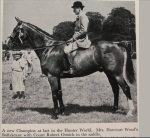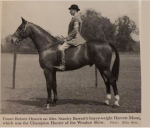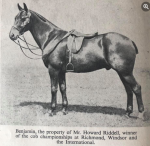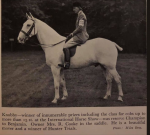Tiddlypom
Carries on creakily
If any fat horses are sent straight out of the ring, as should happen, then that conumdrum would not occur.
Don't stand the fat horse down the line, simply don't let it take part in the class.
Don't stand the fat horse down the line, simply don't let it take part in the class.





